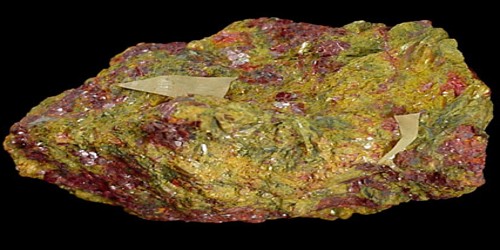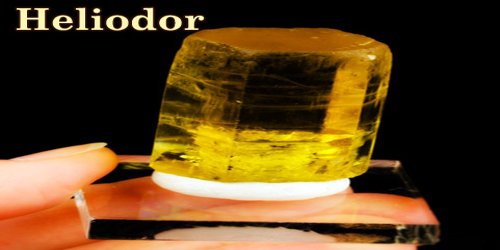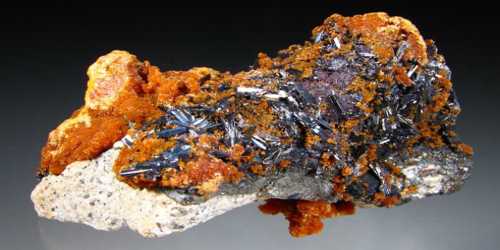Donnayite-(Y) is a rare-earth carbonate mineral containing the rare-earth metal yttrium. It was first discovered in 1978 at Mont St-Hilaire, Quebec. It can be found in pegmatite dikes, crystal lined cavities, and in interstices at the Mont Saint-Hilaire complex in Quebec, Canada where the mineral has its type locality. Other localities for Donnayite include in Russia, Greenland, Bolivia, and Australia.
Donnayite was subsequently identified and named after Joseph D. H. Donnay and his wife, Gabrielle Donnay.
General Information
- Category: Carbonate minerals
- Formula: NaCaSr3Y(CO3)6∙3H2O
- Crystal system: Triclinic
- Crystal class: Pedial (1) (same H-M symbol)

Properties
Donnayite crystals tend to be small and the color is commonly pale yellow to yellow with a white streak and a vitreous luster. Donnayite crystals usually display trigonal or hexagonal symmetry and have a hardness of 3. Minerals closely related to donnayite include synchysite, calcite, sphalerite, microcline, and analcime.
- Color: Brown, Brownish yellow, Colorless, Gray, Gray white.
- Density: 3.3
- Diaphaneity: Transparent to Translucent
- Hardness: 3 – Calcite
- Luster: Vitreous (Glassy)
- Streak: white
- Mohs scale hardness: 3
Geologic occurrence
Donnayite occurs in minute quantities in the pegmatite dykes, miarolitic cavities, and interstices in the nepheline syenites at Mont St-Hilaire, Quebec. It is usually found in rocks from the alkaline complexes and in carbonatites. In addition to this geologic occurrence, donnayite can be found in Russia at Mt. Kukisvumchorr, Khibiny massif, Kola Peninsula, and at the Vishnevogorsk complex, Vishnevy-Ilmen Mountains, Southern Ural Mountains. Recently, donnayite has been discovered along with ewaldite, epitaxially intergrown, in crystals from the Narsaarsuk pegmatite in South Greenland. Related minerals include ewaldite, mckelveyite, synchysite, calcite, sphalerite, microcline, and analcime.
Information Source:
















